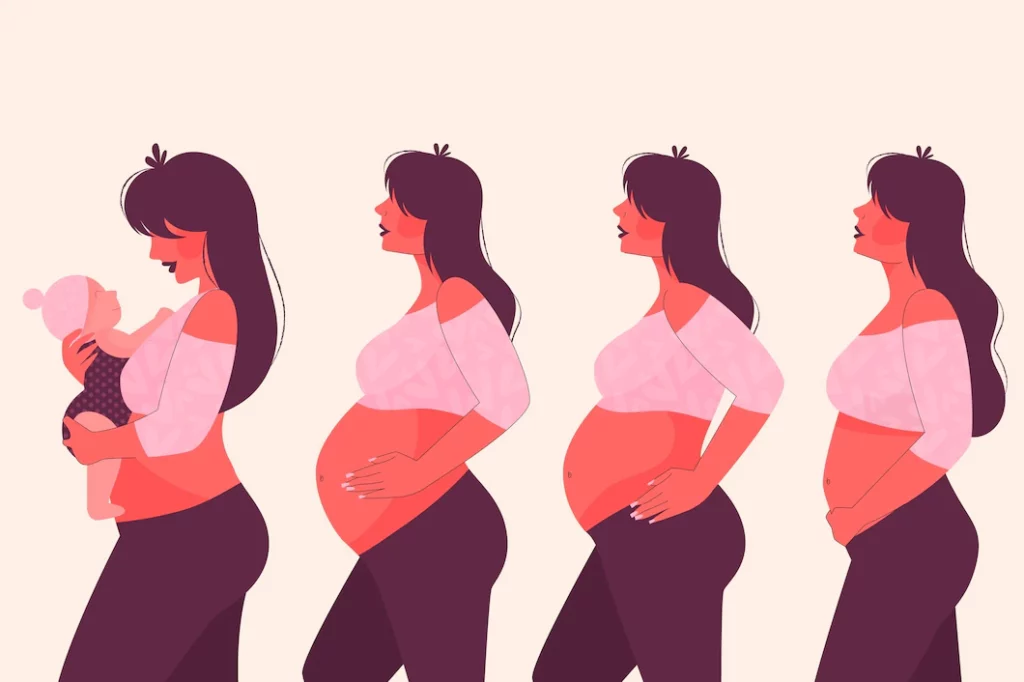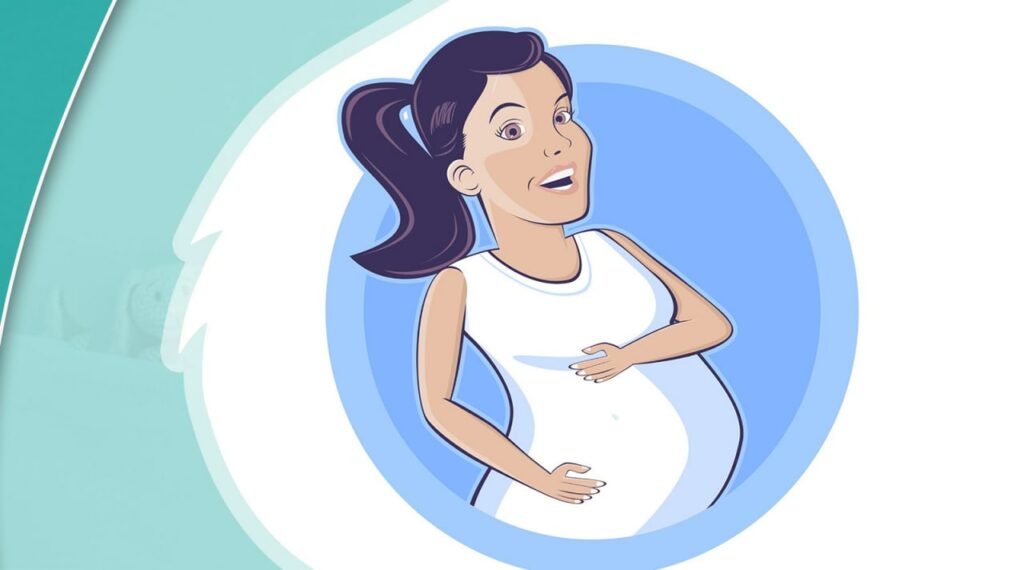We will discover everything about pregnancy stages in detail through this digital report from Bekoka press.
A normal pregnancy lasts 40 weeks, beginning with the first day of your last menstruation cycle (LMP) and ending with the baby’s birth. It is divided into three trimesters: the first, second, and 3rd trimesters. All through development, the fetus undergoes numerous shifts.
pregnancy stages
The first trimester (week 1–week 12)
In the first trimester, your body goes through a lot of adjustments. Hormonal fluctuations affect virtually every organ system in the human body. These changes may lead to signs even in the early stages of pregnancy. Your missed period is a clear indication that you are pregnant. Other modifications could include the following:
- Extreme exhaustion
- Breasts are tender and swollen.
- Your nipples may also be visible.
- Uncomfortable stomach, with or without vomiting
- Cravings or aversion to certain foods
- Moves in mood
- Constipation (trouble having bowel movements) (trouble having bowel movements)
- Urine should be passed more frequently.
- Headache
- Heartburn
- Gain or loss of weight
As your body changes, you may need to adjust your usual schedule, like going to bed earlier or eating small, regular meals.
Trimester two (week 13–week 28)
The 2nd trimester of pregnancy is usually easier with most women than the first. However, it is equally crucial to keep knowledgeable about your pregnancy during these months.
You may realize that signs such as nausea and tiredness are subsiding. However, other, more obvious differences in your body are now taking place. As the baby develops, your abdomen would then expand. But before the end of this trimester, you’ll notice your baby starting to move!
You could experience the following symptoms as your body adjusts to accommodate your growing baby:
- Aches and pains in the back, abdomen, groin, or thighs
- Skin discoloration around your nipples.
Trimester three (week 29–week 40)
You’ve reached the final stretch! Some of the same inconveniences you experienced in your second trimester would return. Furthermore, many women experience breathing difficulties and notice needing to use the restroom more frequently. This is because your baby is growing and putting more strain on your organs. Don’t worry; your baby is fine, and all these issues will go away once you have given birth.
You may notice the following new shape changes during the third trimester:
- Breathing difficulty
- Heartburn
- Swelling of the ankles, fingers, and face. (Contact your physician right away if you notice any rapid or excessive swelling or if you obtain a significant amount of weight very quickly.)
The Baby at four Weeks in the First Trimester

Your Baby is growing at four weeks:
- The nervous system (brain and spinal cord) has started to develop.
- The formation of the heart begins.
- Arm and leg buds begin to appear.
- Your Baby is now an embryo, measuring 1/25 of an inch in length.
A human embryo is eight weeks old
The Baby at eight Weeks in the First Trimester
The embryo begins to develop into a fetus at eight weeks. All major organs have begun to form, indicating that fetal development has begun.
- The Baby’s heart starts beating.
- The arms and legs lengthen.
- Fingers and toes are starting to form.
- Sex organs begin to develop.
- The face begins to take shape.
- The umbilical cord can be seen clearly.
The Baby at twelve Weeks in the First Trimester
- At this point in your Baby’s growth, the end of the first trimester is around week 12:
- The muscles and the nerves begin to communicate. Your child can make a fist.
- The outer sex organs indicate whether your Baby is a boy or a girl.
- To safeguard the working to develop eyes, the eyelids close.
- They would not reopen until week 28.
- Your Baby’s head development has slowed, and he or she is about 3 inches long and weighs almost an ounce.
Second Trimester Changes a Woman Might Go Through

It may be easier to get through the second trimester than the first. Your nausea (morning sickness), as well as fatigue, could subside or disappear entirely.
The Baby at 16 Weeks in the Second Trimester
Your baby’s musculoskeletal system continues to grow as your body modifications in the second trimester.
- Skin forms and becomes nearly translucent.
- Meconium forms in your baby’s digestive tract. This is your child’s first bowel movement.
- Your baby starts sucking with his or her mouth (sucking reflex).
- Your baby is approximately 4 to 5 inches tall and weighs nearly 3 ounces.
- The Baby at 20 Weeks in the Second Trimester
Your baby is still developing at around 20 weeks in the second trimester:
- Your baby is becoming more active. You may notice movement or kicking.
- Lanugo, a fine, feathery hair, and vernix, a waxy, mainly cover your baby.
- Eyebrows, lashes, and fingernails.
The Baby at 24 Weeks in the 2nd Trimester
Even more, changes take place for your growing Baby by 24 weeks:
- The bone marrow of the Baby begins to produce blood cells.
- On your Baby’s tongue, taste buds develop.
- Fingerprints, as well as footprints, have been created.
- On your Baby’s head, hair starts to grow.
- The lungs have formed but do not yet function.
- Your Baby has a frequent sleeping pattern.
- If your child is a boy, his testicles will start to slide down into his scrotum. If your Baby is a girl, her uterus and reproductive organs are in place, and the ovaries have formed a year’s supply of eggs.
- Your Baby weighs about 112 pounds and measures 12 inches in length.
The Baby at 32 Weeks in the Third Trimester
Your baby’s development continues at 32 weeks in the third trimester:
- Your baby’s bones seem to be soft but complete.
- Motion and trying to kick become more active.
- The eyes can open as well as close.
- Although the lungs are not fully formed, “breathing” movements.
- Your baby’s body starts storing essential minerals like iron and calcium.
- Lanugo (fine hair) starts falling out.
- The Baby at 36 Weeks in the Third Trimester
As your due date gets closer to 36 weeks, your baby continues to grow
- The waxy coating (vernix) that protects the skin thickens.
- Body fat levels rise.
- Your baby is growing and has less room to move approximately. Moves are less powerful, but they are still felt.
Third Trimester: The baby is between 37 and 40 weeks old
Finally, the following stages of your baby’s growth happen between 37 and 40 weeks:
Your baby is considered a proper term after 37 weeks.
- The organs in your baby can perform on their own.
- As you approach your due date, your baby may shift into a head-down role in preparation for birth.
- The average birth is between six and nine pounds 2 ounces, and the average length is 19 to 21 inches. Most full-term babies fall within these distances, but healthy children come in a wide range of weight training and sizes.
References


